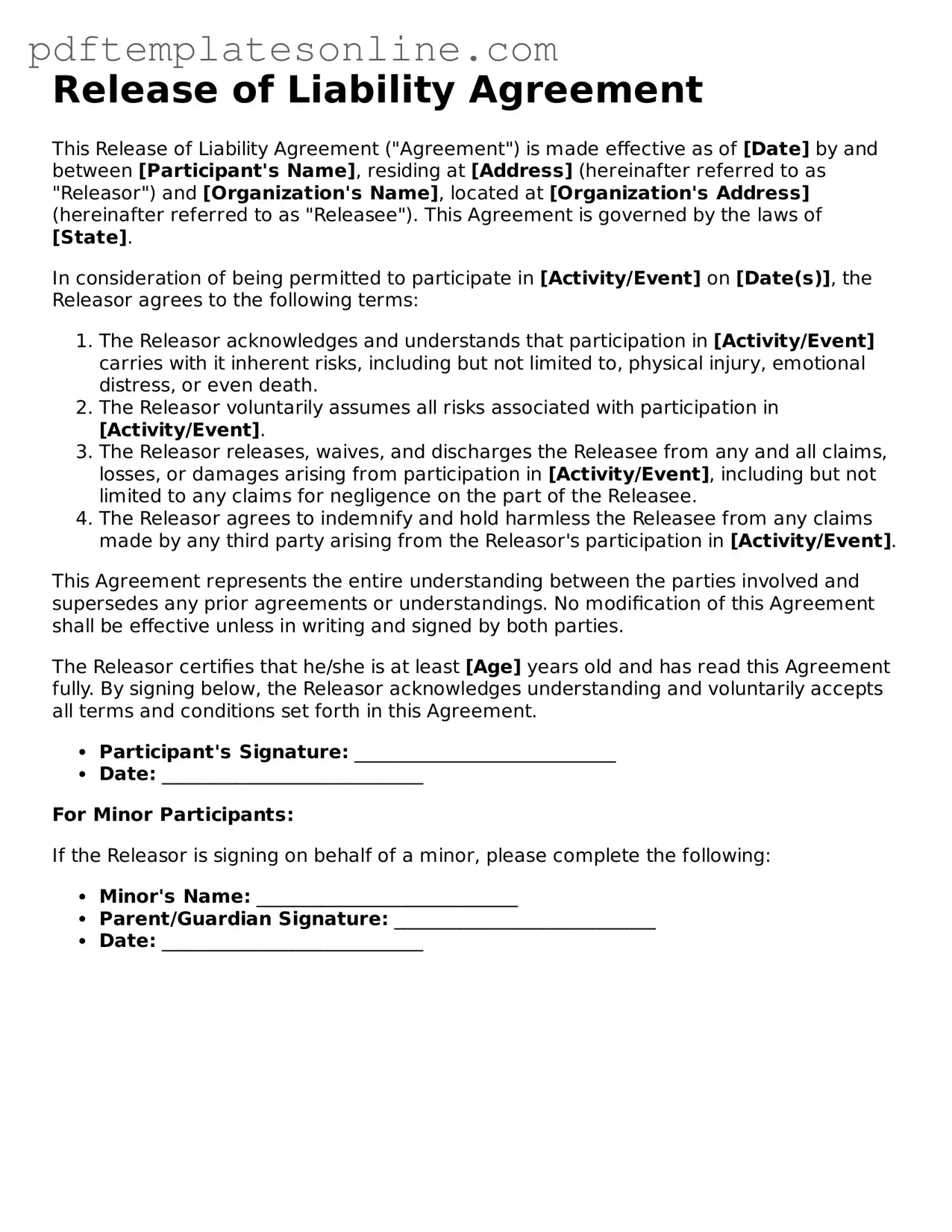Filling out a Release of Liability form can be straightforward, but many individuals make common mistakes that can lead to misunderstandings or legal issues. One frequent error is failing to read the entire document before signing. It’s crucial to understand what rights you are waiving. Skimming the text can result in overlooking important clauses that could affect your legal standing.
Another mistake is not providing complete and accurate information. When individuals leave out details such as their full name, address, or date of birth, it can render the form invalid. Incomplete forms may lead to disputes later on, especially if the information is required for identification or verification purposes.
People often forget to date the form when they sign it. The date is essential as it establishes when the agreement was made. Without it, the validity of the release may be questioned, especially if a claim arises long after the signing.
Additionally, some individuals neglect to clarify the scope of the liability being released. It’s vital to understand what activities or incidents the release covers. Vague language can create confusion, leaving parties uncertain about what they are agreeing to. Clear definitions help prevent future disputes.
Another common mistake involves not having witnesses or notarization when required. Certain situations or jurisdictions may necessitate additional verification. Not following these requirements can weaken the enforceability of the release, making it easier for parties to challenge its validity.
Lastly, individuals sometimes fail to keep a copy of the signed form. After signing, it is wise to retain a copy for personal records. Without it, proving the terms of the agreement can become difficult, especially if questions arise later regarding the release.
